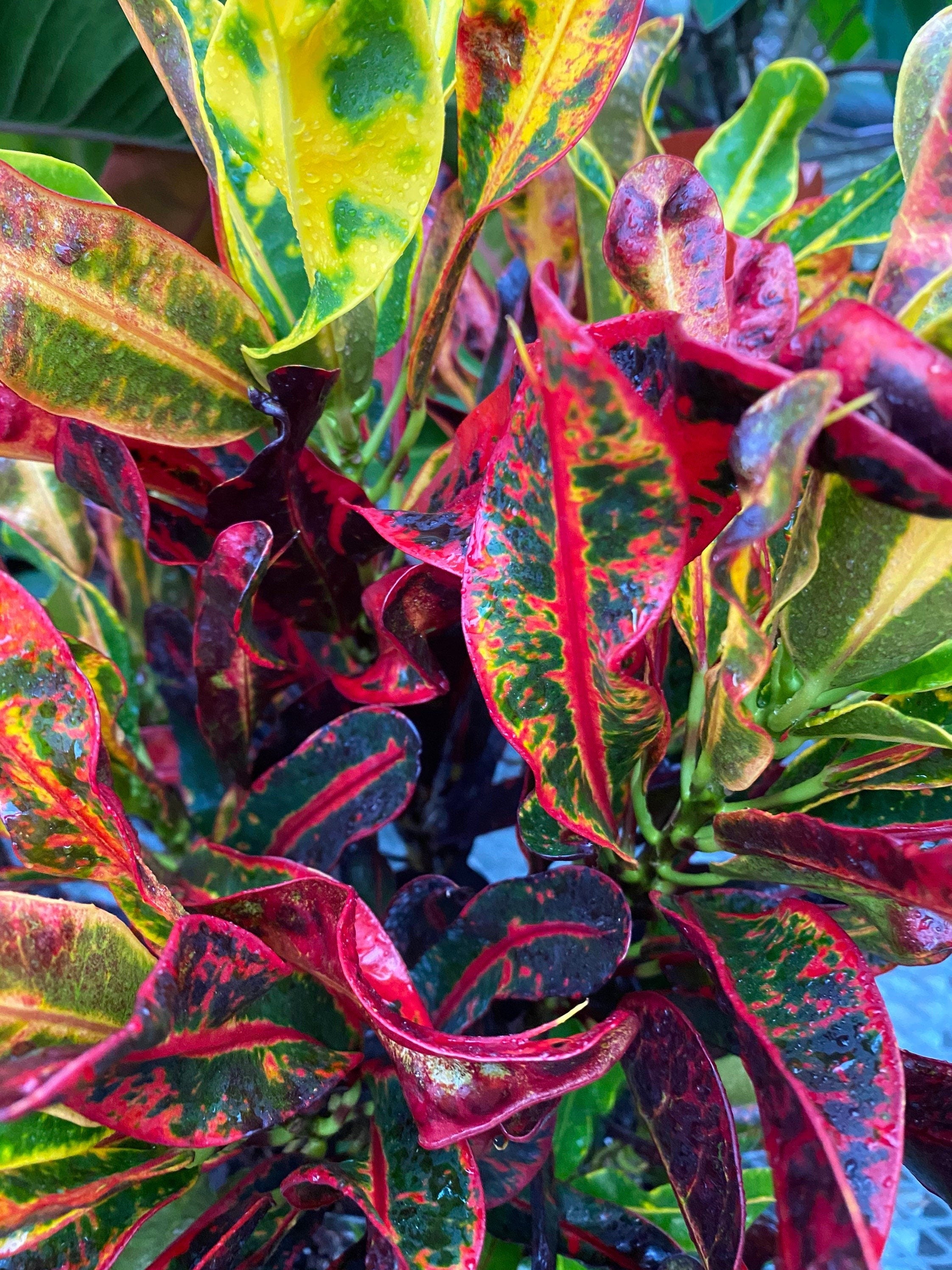The Croton plant, a vibrant and eye-catching addition to any indoor space, is renowned for its stunning foliage. With its diverse range of colors and patterns, the Croton brings a touch of tropical beauty to homes and offices alike.
Understanding the Croton Plant
Crotons, scientifically known as Codiaeum variegatum, belong to the Euphorbiaceae family. These evergreen shrubs are native to Southeast Asia and the Pacific Islands, where they thrive in warm, humid climates. Their popularity as houseplants stems from their ability to adapt to indoor conditions and their striking visual appeal.
Key Characteristics of Crotons

Diverse Foliage: Crotons are celebrated for their incredibly varied leaf shapes and colors. Leaves can be broad, narrow, twisted, or curled, and they may exhibit a combination of green, red, yellow, orange, and purple hues.
Caring for Your Croton Plant
Light Requirements
Crotons are light-hungry plants that thrive in bright, indirect light. They can tolerate some direct sunlight, but prolonged exposure may scorch their leaves. Ideally, place your Croton near a south-facing window, where it can receive ample light without being subjected to harsh, direct rays.
Temperature and Humidity
Crotons prefer warm temperatures, ideally between 65°F and 80°F (18°C to 27°C). They also thrive in high humidity, which can be challenging to maintain in dry indoor environments. To increase humidity, consider using a humidifier, placing the plant on a humidity tray, or misting its leaves regularly.
Watering Needs
Crotons require consistent moisture, but they are susceptible to root rot if overwatered. Allow the top inch of soil to dry out between waterings. When watering, ensure that the soil is thoroughly moistened, but avoid letting the plant sit in waterlogged soil.
Soil and Fertilization

Crotons prefer well-draining, nutrient-rich soil. A well-balanced, all-purpose potting mix works well. To promote healthy growth, fertilize your Croton with a balanced liquid fertilizer diluted to half strength every two weeks during the growing season (spring and summer).
Common Croton Varieties
The diverse world of Crotons offers a wide range of cultivars, each with its unique characteristics. Here are some popular Croton varieties:
Croton Petra
Croton Petra is a stunning variety with vibrant red, orange, and yellow foliage. Its leaves are long and narrow, adding a touch of elegance to any space.
Croton Gold Dust
Croton Gold Dust is a striking variety with dark green leaves speckled with bright yellow spots. Its contrasting colors create a visually appealing display.
Croton Mammy

Croton Mammy is a popular choice for its large, glossy leaves that exhibit a range of colors, including green, red, and orange.
Croton Mrs. Iceton
Croton Mrs. Iceton is a beautiful variety with long, narrow leaves that are predominantly red with green and yellow markings.
Troubleshooting Common Croton Problems
While Crotons are relatively hardy plants, they can be prone to certain issues. Here are some common Croton problems and how to address them:
Leaf Drop
Leaf drop can be caused by various factors, including insufficient light, low humidity, or sudden temperature changes. To prevent leaf drop, ensure that your Croton receives adequate light, maintain high humidity levels, and avoid exposing the plant to drastic temperature fluctuations.
Pale or Faded Leaves

Pale or faded leaves often indicate a lack of light. Move your Croton to a brighter location to encourage vibrant foliage.
Brown Leaf Tips
Brown leaf tips can be a sign of low humidity or underwatering. Increase humidity levels by misting the plant regularly or using a humidifier. Additionally, ensure that the soil is consistently moist but not waterlogged.
Pests
Crotons are susceptible to pests like mealybugs, scale insects, and spider mites. Regularly inspect your plant for signs of infestation. If you notice pests, treat them promptly with insecticidal soap or neem oil.

The Croton plant, with its vibrant foliage and tropical allure, is a captivating addition to any indoor space. By providing the right care conditions, you can enjoy the beauty of this stunning plant for years to come. Remember to handle Crotons with care, as they are toxic to humans and pets.
Croton Plant
